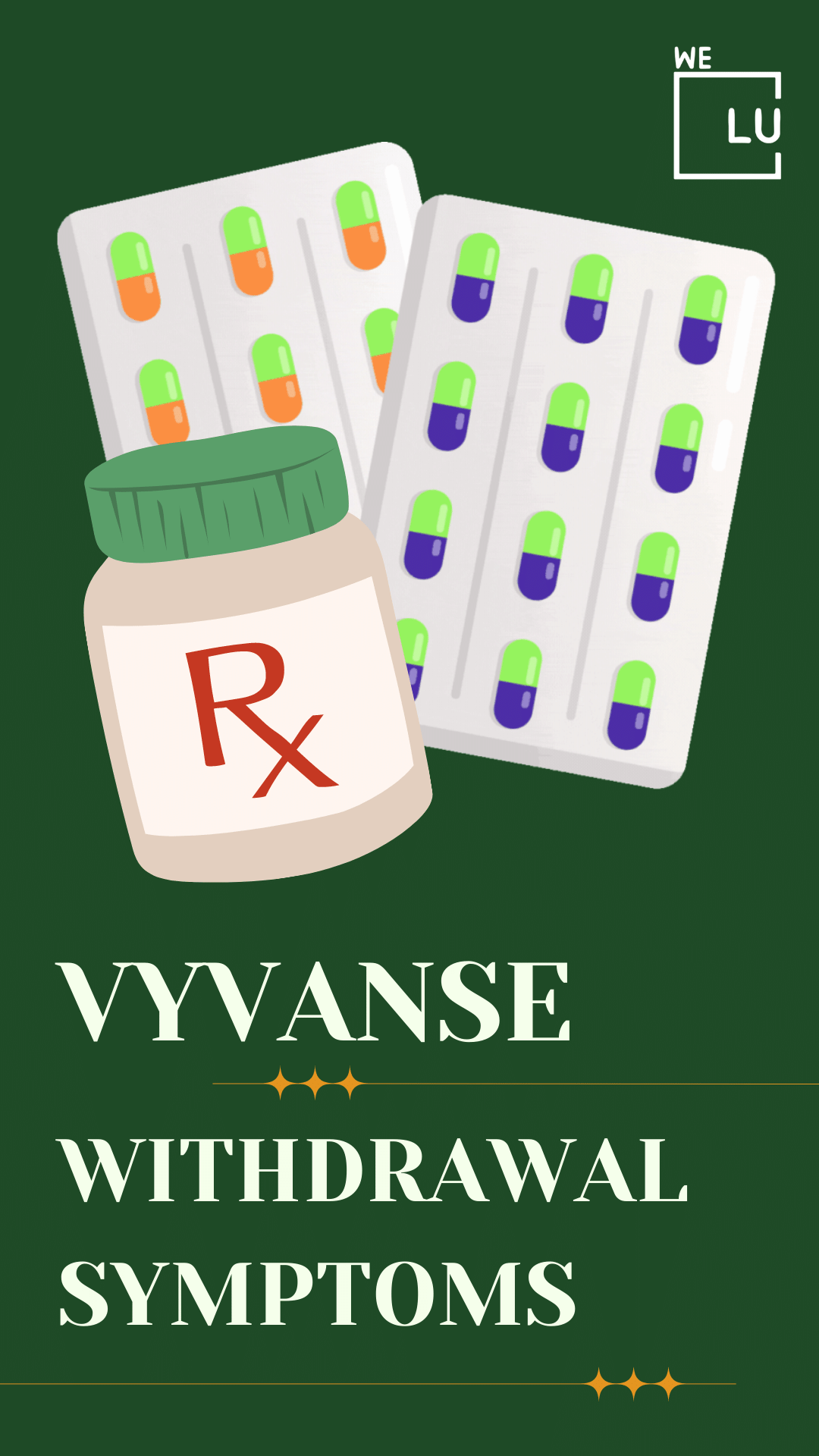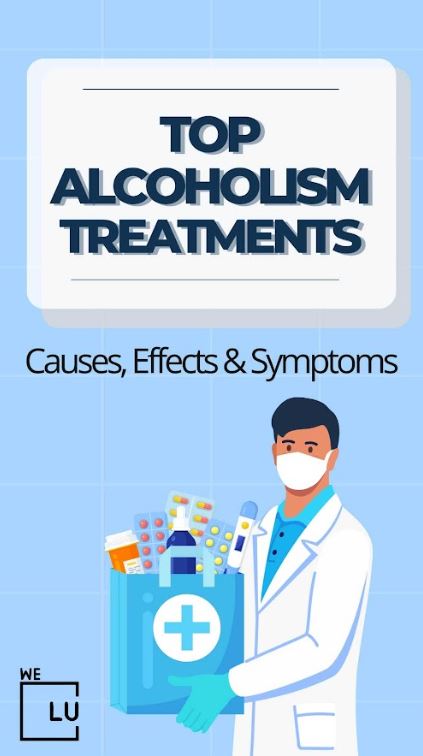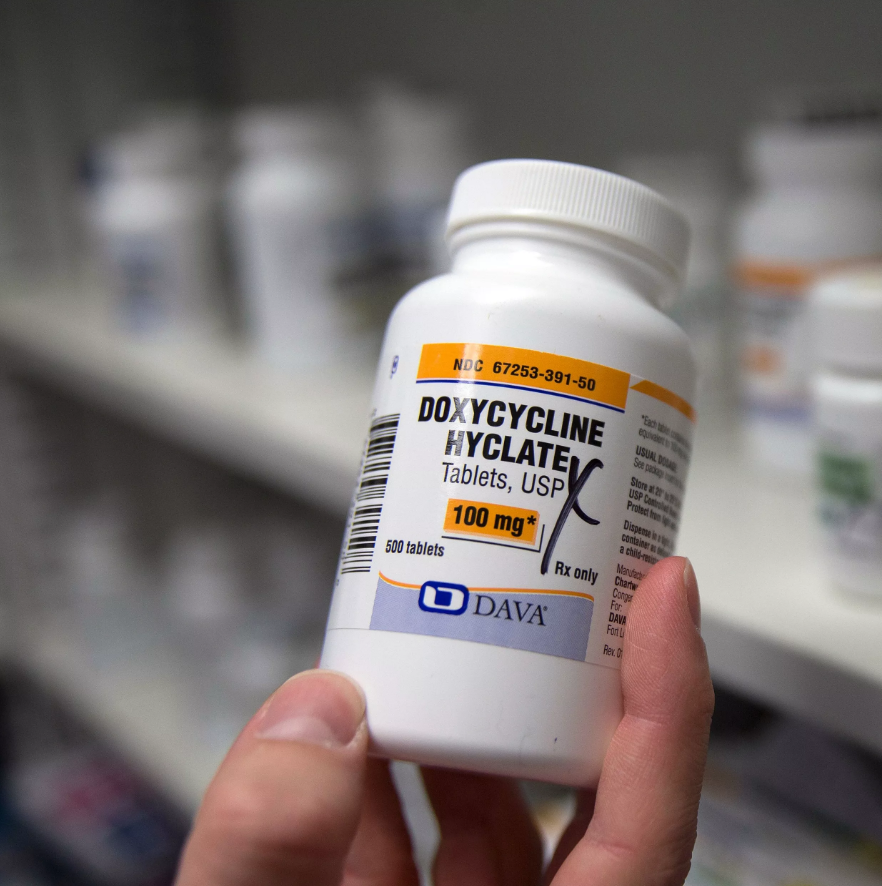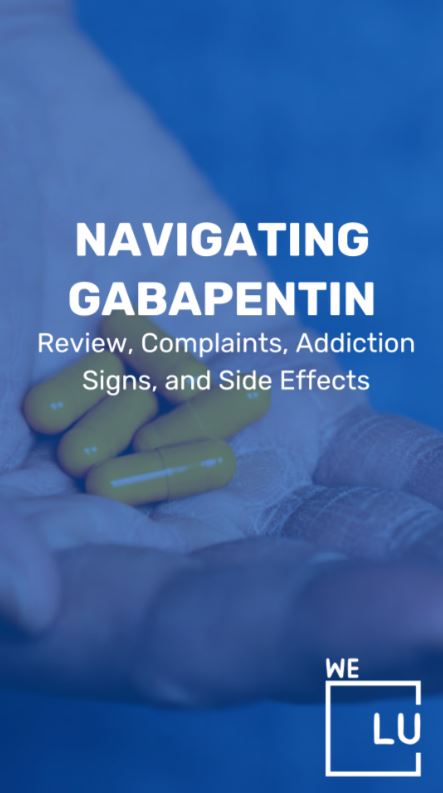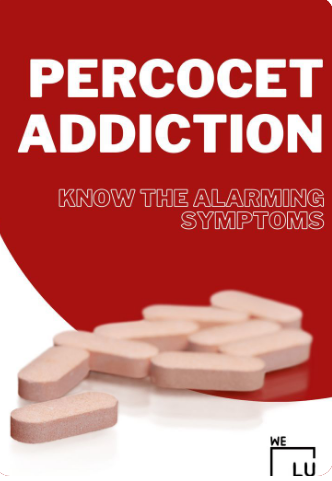How Long Does Suboxone Stay in Your System?
For up to two weeks following the last dose, Suboxone can still be found in urine. Various variables influence this, but half-life has the most significant impact. Many ask, how long does Suboxone stay in system? Buprenorphine and naloxone, which comprise Suboxone, each have a different half-life. The half-life of a medication is how long it takes for half of a single dose to leave your body. An average medicine has five half-lives before it entirely leaves your body.
You may have received a methadone or Suboxone prescription as part of your treatment plan if you or someone you know is seeking help for an opioid addiction. Both are essential components of medication-assisted therapy, a method for treating people who have opioid dependency or addiction.
Looking for help with substance abuse challenges like Suboxone dependency? Join thousands of patients who trusted We Level Up New Jersey for Suboxone withdrawal and other substance abuse treatments. Call 24/7 for more Suboxone detox information today. Your call is free and confidential. Access addiction professionals who understand your circumstances and are ready to help.
What is Suboxone?
Suboxone contains a combination of buprenorphine and naloxone. Buprenorphine is an opioid medication, sometimes called a narcotic. Naloxone blocks the effects of opioid medication, including pain relief or euphoric effects that can lead to opioid abuse.
Suboxone Half Life
The drug’s half-life is a primary factor in how long Suboxone will remain in your system. Buprenorphine, the primary component of Suboxone, has a particularly lengthy elimination half-life compared to other opioids.
The time it takes for a drug’s elimination half-life to occur is measured in hours. How long does Suboxone stay in your system 8mg? It has a half-life of 24 to 42 hours.
Buprenorphine is converted into norbuprenorphine once your body breaks it down. Compared to buprenorphine, this drug has a half-life of up to 150 hours. Furthermore, norbuprenorphine has a 14-day half-life in urine.
How Long Does Suboxone Stay in Your System? General Timeline Chart.
Here is a general timeline chart indicating how long Suboxone (buprenorphine and naloxone) can stay in various bodily fluids and how long it may be detectable:
| Bodily Fluid | Detection Time for Suboxone |
|---|---|
| Urine | Up to 2-7 days after the last dose |
| Blood | Up to 24 hours after the last dose |
| Saliva | Up to 1-2 days after the last dose |
| Hair Follicles | Up to 90 days after the last dose |
Half of the buprenorphine in a Suboxone dose is eliminated by the body in almost two full days. How long does Suboxone stay in the system? A single dose of Suboxone may take nearly nine days to leave your body because it takes five half-lives for a drug to go through your system entirely.
What is Suboxone Used For?
Most physicians, addiction experts, and advocates agree that Suboxone saves lives. The US government has recently been lightening up on the requirements for doctors and nurses to “get waivered” in an urgent attempt to increase the availability of Suboxone prescribers as the number of opioid deaths keeps rising.
All opioids are chemically related and interact with opioid receptors in the body and brain nerve cells. Opioid pain relievers are generally safe when taken for a short time as prescribed by a healthcare provider. But because they can induce euphoria in addition to pain relief, they can be abused (taken in a different way or in a larger quantity than prescribed or taken without a doctor’s prescription).
Even as prescribed by a doctor, regular use of opioids can lead to dependence, and when misused, opioid pain relievers can lead to addiction, overdose incidents, and deaths.
An opioid overdose can be reversed with the drug naloxone when given right away. Improvements have been seen in some regions of the country by decreasing the availability of prescription opioid pain relievers and decreasing misuse among the nation’s population. However, since 2011, overdose deaths involving heroin have increased dramatically. Fortunately, effective medications exist to treat opioid use disorders, including methadone, buprenorphine, and naltrexone.
While Suboxone can be an effective drug to aid in recovery from opiate dependence, it is often a drug that is taken for long periods after the user has stopped taking other addictive opioids. Despite its effectiveness, Suboxone can also be addictive.
As a partial opioid agonist, Suboxone produces similar withdrawal effects to other opioids if it is quit “cold turkey.”
Suboxone Side Effects
Suboxone can slow or stop your breathing and may be habit-forming. Misuse of this medicine can cause addiction, overdose, or death, especially in a child or other person using the medicine without a prescription.
Common Side Effects of Suboxone
- Nausea and vomiting.
- Headache.
- Sweating.
- Numb mouth.
- Constipation.
- Painful tongue.
- Dizziness and fainting.
- Problems with concentration.
- Irregular heartbeat.
- Insomnia.
- Blurry vision.
- Back pain.
- Drowsiness.
Other Less Common Side Effects of Suboxone:
- Anxiety.
- Depression.
- Nervousness.
Alternatives to Suboxone
- Lofexidine.
- Methadone.
- Naltrexone.
Taking Suboxone during pregnancy may cause life-threatening withdrawal symptoms in the newborn.
Fatal side effects can occur if you use this medicine with alcohol or other drugs that cause drowsiness or slow your breathing.
Symptoms of Withdrawal From Suboxone
Suboxone is a prescription drug used in an opioid treatment program that includes behavioral therapy and counseling. Suboxone, which contains buprenorphine and naloxone, can be an effective medication for opiate dependence. Still, sometimes, it must be taken for long periods after the user has stopped using addictive opioids.
Suboxone Withdrawal Symptoms
- Nausea and vomiting.
- Muscle and body aches.
- Anxiety.
- Depression.
- Irritability.
- Fever or chills.
- Sweating and Headaches.
The symptoms can vary in severity and duration, depending on how long users have been taking Suboxone, as well as the dosage of the drug. Generally, most physical withdrawal symptoms will subside after one month, though psychological dependence can remain. Suboxone Withdrawal Symptoms are the worst in the first 72 hours. This is when most physical symptoms are experienced. Then, in the first week after discontinuing Suboxone, symptoms generally subside to general aches and pains in the body, as well as insomnia and mood swings.
After the second week, depression is the most noticeable symptom. After one month, users will likely still be experiencing intense cravings and depression. This is the most delicate time after stopping Suboxone use, as users have an excellent potential for relapse. If you or a loved one is suffering from addiction to Suboxone, please seek help immediately from a treatment professional. Like any other addictive substance, withdrawal from Suboxone can last several months. Though the significant physical symptoms will cease after a month of not taking the drug, psychological symptoms can go on for several months.
Suboxone Drug Interactions
Suboxone (buprenorphine and naloxone) can interact with various drugs, potentially leading to adverse effects or reduced effectiveness. Here’s a list of some drug interactions with Suboxone:
- Opioid Agonists/Antagonists: Combining Suboxone with other opioids, including prescription painkillers like oxycodone or illicit drugs like heroin, can lead to dangerous respiratory depression.
- Sedatives/Hypnotics: Suboxone can enhance the sedative effects of benzodiazepines (e.g., Xanax, Valium) and certain sleep medications, increasing the risk of overdose.
- Alcohol: Alcohol can intensify the sedative effects of Suboxone and increase the risk of respiratory depression, coma, or death.
- Barbiturates: Mixing Suboxone with barbiturates can lead to severe respiratory depression and central nervous system depression.
- Antidepressants: Certain antidepressants, especially monoamine oxidase inhibitors (MAOIs), can interact with Suboxone, potentially leading to serotonin syndrome.
- Antifungal Medications: Some antifungal drugs can affect the metabolism of Suboxone, requiring adjustments in Suboxone dosages.
- Antiretroviral Medications: Suboxone may interact with certain HIV medications, affecting their effectiveness.
- Antiseizure Medications: Some antiseizure drugs can alter the metabolism of Suboxone, potentially requiring dosage adjustments.
- Certain Antibiotics: Specific antibiotics may interact with Suboxone, affecting its absorption or metabolism.
- CYP3A4 Inhibitors/Inducers: Medications that inhibit or induce the CYP3A4 enzyme can influence the metabolism of Suboxone.
Suboxone Overdose
A Suboxone overdose can occur when someone takes more Suboxone (buprenorphine and naloxone) than their body can safely handle. Suboxone is often used to treat opioid dependence but can be misused or abused. Here are some key points to understand about Suboxone overdose:
- Buprenorphine’s Partial Agonist Effect: Buprenorphine is a partial opioid agonist, which means it can activate opioid receptors in the brain but has a ceiling effect where its effects level off, making it less likely to cause severe respiratory depression compared to full opioid agonists like heroin or oxycodone. However, in high doses, it can still lead to dangerous respiratory depression.
- Naloxone’s Role: Suboxone contains naloxone, an opioid antagonist. When taken as prescribed, naloxone has limited effects because it is not well-absorbed through the digestive system. However, if Suboxone is crushed and injected or misused in other ways, naloxone can block the effects of buprenorphine and precipitate opioid withdrawal.
- Symptoms of Suboxone Overdose: Signs of a Suboxone overdose can include extreme drowsiness, slowed breathing, confusion, pinpoint pupils, clammy skin, low blood pressure, and even loss of consciousness. In severe cases, it can lead to coma and death.
- Treatment: If someone is suspected of a Suboxone overdose, seeking medical help is crucial. Naloxone (Narcan) can be administered to reverse the effects of buprenorphine and restore normal breathing. However, because Suboxone has a longer duration of action than some other opioids, repeated doses of naloxone or prolonged monitoring may be necessary.
- Prevention: To prevent Suboxone overdose, it’s essential to take the medication exactly as a healthcare provider prescribes. Never take more Suboxone than prescribed, and avoid combining it with other opioids, sedatives, or alcohol, as these substances can increase the risk of overdose.
- Medical Supervision: Suboxone treatment should always be administered under medical supervision as part of a comprehensive addiction treatment program. This can help ensure the medication is used safely and effectively in recovery.
Overdose is a severe risk, but with proper medical care and addiction treatment, individuals can work toward recovery in a safe and controlled behavior.
How Long Does Suboxone Stay in Your System? Drug Tests Detection
The other component of Suboxone, naloxone, has a half-life of 2 to 12 hours. Your body can then keep it for up to 60 hours. Doctors rarely check for naloxone exposure because the medication is not abused.
Buprenorphine, the opioid in Suboxone, was developed in the 1970s as a safer opioid than morphine or heroin for pain treatment. Studies suggested that buprenorphine could be an attractive alternative to methadone, as it could require fewer regulations because of its inherent abuse deterrence properties as a partial opioid agonist-antagonist.
The drug’s manufacturer and the addiction treatment community lobbied for an exception to the Narcotic Addict Treatment Act to allow individual providers, rather than federally designated clinics, to prescribe buprenorphine. The Drug Addiction Treatment Act of 2000 authorized physicians via a new individual waiver to prescribe specific opioids to treat opioid use disorder. Buprenorphine is currently the only opioid approved under this waiver.
How Long Does Suboxone Stay in Your System? Urine Test
Suboxone, a medication used to treat opioid addiction, can typically be detected in a urine test for approximately 2 to 7 days after the last dose. The detection window may vary depending on factors such as the individual’s metabolism, the dosage taken, and the frequency of use.
How Long Does Suboxone Stay in Your System? Blood Test
Suboxone (buprenorphine and naloxone) can generally be detected in a blood test for a shorter duration compared to urine tests. It is typically detectable in the bloodstream for up to 24 hours after the last dose. However, individual factors like metabolism and dosage may influence this timeframe, and detection times can vary from person to person.
How Long Does Suboxone Stay in Your System? Saliva Test
Suboxone (buprenorphine and naloxone) is detectable in saliva for a relatively short period. Generally, it can be identified in a saliva test for up to 1 to 2 days after the last dose. Like other drug tests, the precise detection window may vary based on individual factors, including metabolism and amount. Still, it is typically shorter than urine or blood tests.
How Long Does Suboxone Stay in Your System? Hair Test
Suboxone (buprenorphine and naloxone) can be detected in a hair follicle test more often than other drug test types. It is typically identifiable in hair follicles for up to 90 days after the last dose. The detection window in hair can vary based on factors such as hair growth rate and length, but it provides a longer historical view of drug use compared to urine, blood, or saliva tests.
Factors Affecting How Long Does Suboxone Stay in Your System?
How long does Suboxone stay in your system? Suboxone typically needs nine days to leave a person’s system altogether. The medicine may leave the bloodstream more quickly for some people while taking longer than usual for others. The following are a few factors that could affect how many days Suboxone stays in your system:
- Liver Function: Individuals with impaired liver function may have higher blood levels of Suboxone than those with healthy livers. Furthermore, those with liver issues may experience a longer half-life of Suboxone.
- Dosage: The faster Suboxone is eliminated from the body, the lower the dose.
- Frequency of Use: Due to frequent use, regular Suboxone users may have some drug buildup in their bodies. Because of this, someone who routinely takes it may require more time to eliminate it from their system than someone who has only taken it once.
- Co-ingestion with Other Drugs: Some drugs can make Suboxone more concentrated in your body, making it take longer to leave your system. Atazanavir, an HIV treatment included in medications like Evotaz and Reyataz, is one of these medications.
Get addiction counseling that works. Discover professional help from We Level Up New Jersey’s addiction and mental health therapists. Start getting support with a free call to our addiction hotline.
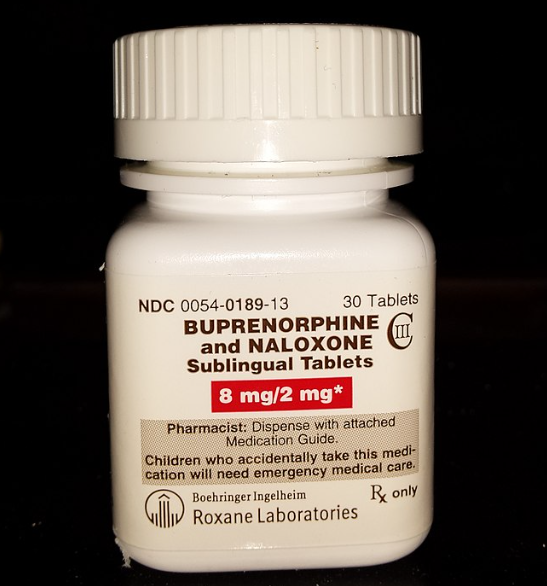
Skip To:
Learn More:
- Is Suboxone Addictive? Symptoms of Suboxone Addiction. How is Suboxone Used to Treat Addiction?
- Subutex vs Suboxone, Differences and Effects
- Can You Overdose on Suboxone?
- Is It Safe To Mix Suboxone and Alcohol?
- Suboxone Detox Program
- How to Pass a Drug Test? How People Try to Beat Drug Testing. How to Pass a Mouth Swab Drug Test. How to Pass a Drug Test for Weed? How to Pass a Drug Test for Meth?
- What is Subutex (Buprenorphine)? Find Subutex Doctors Near Me. (Buprenorphine) Subutex Pill Uses. (Buprenorphine) Subutex 8mg Dose. How Long Does Subutex Stay in Your System? (Buprenorphine) Subutex Side Effects. Search for a Subutex Clinic Near Me.
- How Long Does Subutex Stay in Your System?
- Narcan Nasal Spray
- How Long Does Methadone Stay in Your System?
Get Help. Get Better. Get Your Life Back.
Searching for Accredited Drug & Alcohol Rehab Centers Near You? Or Mental Health Support?
Even if you have failed previously, relapsed, or are in a difficult crisis, we stand ready to support you. Our trusted behavioral health specialists will not give up on you. Call us when you feel ready or want someone to speak to about therapy alternatives to change your life. Even if we cannot assist you, we will lead you wherever you can get support. There is no obligation. Call our hotline today.
FREE Addiction Hotline – Call 24/7How Long Does Suboxone Last?
How long does Suboxone last in your system? Since Suboxone affects the body in so many complex ways, it’s impossible to predict exactly how long any given patient will feel the effects. The buprenorphine in the drug usually lasts at least 24 hours. You should not feel severe opioid cravings or experience any withdrawal symptoms during this time. In some patients, buprenorphine can last even longer. Suboxone may keep them from experiencing withdrawal symptoms for up to 60 hours.
Meanwhile, the naloxone in Suboxone gets metabolized a little quicker. This substance will usually only directly block opioids for an hour or two. On average, it blocks opioid receptors for 30 to 120 minutes. This means that if you do make the mistake of injecting Suboxone, you cannot feel the effects of another dose for up to two hours.
How long does a suboxone strip last? Buprenorphine-with-naloxone sublingual film (suboxone strip) can be prescribed on the Pharmaceutical Benefits Scheme (PBS) for opiate dependence. The Pharmaceutical Benefits Advisory Committee recommended listing buprenorphine-with-naloxone sublingual film on a cost-minimization basis — similar efficacy and cost — compared with buprenorphine-with-naloxone sublingual tablets.
How long do suboxone strips last? Buprenorphine-with-naloxone sublingual films dissolve faster under the tongue than buprenorphine-with-naloxone sublingual tablets (on average, 6 minutes more quickly for the 8 mg / 2mg dose.
Top 10 Does Suboxone Show Up in a Drug Test? FAQs
-
Does Suboxone show on drug tests?
Yes, Suboxone (buprenorphine and naloxone) can appear on specific drug tests, particularly those designed to detect opioids. Drug tests for Suboxone typically aim to identify the presence of buprenorphine, the active ingredient, or its metabolites in bodily fluids like urine, blood, saliva, or hair.
-
How long do Suboxone strips stay in your system?
Generally, they can be identified in urine for about 2 to 7 days after the last dose, in blood for up to 24 hours, in saliva for 1 to 2 days, and hair follicles for up to 90 days. However, exact detection times can vary among individuals.
-
What is the Suboxone half life 8mg?
The half-life of Suboxone can vary depending on individual factors like metabolism. Still, for an average individual, the half-life of an 8mg Suboxone tablet is approximately 37 hours for buprenorphine (the active ingredient). It takes 37 hours for the body to eliminate half of the buprenorphine from the system.
-
How long do Suboxone strips last?
Suboxone strips, when used according to prescribed dosages, typically relieve opioid withdrawal symptoms and cravings for about 24 to 72 hours. The duration of action can vary among individuals based on factors like metabolism, the dosage prescribed, and individual response to the medication.
-
How long is Suboxone treatment?
The duration of Suboxone treatment for opioid addiction varies from person to person and depends on individual needs and treatment goals. Some individuals may use Suboxone for a relatively short period to manage withdrawal symptoms during detox. In contrast, others may continue treatment for months or even years as part of a comprehensive addiction recovery plan under the guidance of a healthcare provider.
-
How long does Suboxone strips last in treating opioid withdrawal?
Suboxone strips are typically effective in managing opioid withdrawal symptoms for about 24 to 72 hours when used as prescribed. The specific duration of relief can vary among individuals based on factors like the severity of opioid dependence and the dosage of Suboxone prescribed by a healthcare provider.
-
How long is Suboxone withdrawal?
Suboxone withdrawal can vary in duration and intensity from person to person. It typically starts within 24 to 72 hours after the last dose and may peak in severity around days 2 to 4, with acute withdrawal symptoms often lasting a week or more. However, some individuals may experience protracted withdrawal symptoms lasting several weeks or months after discontinuing Suboxone.
The duration and severity of withdrawal symptoms depend on factors such as the individual’s dosage, duration of use, and overall physical health, among others. It’s crucial to seek professional guidance and support when discontinuing Suboxone to manage withdrawal symptoms effectively and safely.
-
What panel drug test for Suboxone?
A standard 5-panel drug test does not typically screen for Suboxone (buprenorphine and naloxone). To detect Suboxone or its metabolites, a specific opioid panel or a broader multi-panel drug test that includes buprenorphine as an analyte would be necessary.
-
Does a 10 panel drug test for Suboxone?
A standard 10-panel drug test usually does not include Suboxone (buprenorphine and naloxone) as one of the substances it screens for. To detect the presence of Suboxone, you would typically need a specialized opioid panel or a more comprehensive drug test specifically designed to identify buprenorphine and its metabolites.
-
What schedule drug is Suboxone?
Suboxone is classified as a Schedule III controlled substance in the United States. This classification is due to buprenorphine, which, while it has a lower potential for abuse compared to Schedule I and II substances, can still lead to physical and psychological dependence when misused. Naloxone, the other component of Suboxone, is included to deter misuse by injection and minimize the potential for diversion.
Suboxone Drug Fact Sheet
Suboxone Drug Class
Suboxone belongs to a specific drug class known as “opioid partial agonist-antagonists.” It combines two active ingredients, buprenorphine and naloxone, each with distinct roles.
How Does Suboxone Work?
Suboxone is widely used in medication-assisted treatment (MAT) for opioid addiction and dependence, and its unique drug-class properties make it an effective tool in helping individuals on their path to recovery while reducing the risk of misuse.
- Buprenorphine: Buprenorphine is the primary active ingredient in Suboxone and acts as a partial opioid agonist. It binds to the same receptors in the brain as other opioids but has a ceiling effect, meaning its effects plateau and do not increase with higher doses. This property helps reduce cravings and withdrawal symptoms associated with opioid dependence without producing the intense euphoria or respiratory depression seen with full opioid agonists.
- Naloxone: Naloxone is included in Suboxone to deter misuse. It’s an opioid receptor antagonist, meaning it blocks the effects of opioids and can precipitate withdrawal symptoms if Suboxone is injected or misused. When taken as prescribed orally, naloxone has limited impacts due to poor absorption.
Is Suboxone Addictive?
According to the American Psychiatric Association (APA), substance use disorder is a complex chronic condition where people continue to use one or more substances despite experiencing harmful consequences. The Drug Enforcement Administration (DEA) classifies Suboxone as a Schedule III controlled substance. Schedule III drugs have moderate to low physical or psychological dependence potential.
Suboxone carries a low to moderate risk of changing the brain’s chemistry, so a person wants to take more of this medication. Moreover, like all opioids, if a person abruptly stops taking Suboxone, they may experience withdrawal symptoms.
How long does Suboxone high last? Suboxone, like any opiate, can be abused. However, because it is only a “partial” agonist of the central opiate receptor (the “mu” receptor), it causes much less euphoria than other opiates such as heroin and oxycodone.
In many cases, people may use Suboxone (or “abuse” it, if defined as using it illegally) to help themselves manage their withdrawal or get off heroin or fentanyl.
Suboxone Drug Tests
Drug tests for Suboxone typically involve screening for buprenorphine and naloxone, the active ingredients in the medication. These tests can be conducted using various bodily fluids, including urine, blood, saliva, and hair, to monitor patient compliance and ensure the drug is being used as prescribed.
What Can Cause a False Positive Drug Test for Suboxone?
A false positive drug test for Suboxone, where Suboxone is mistakenly detected when it hasn’t been taken, can occur due to several factors:
- Cross-Reactivity with Other Substances: Some substances may cross-react with the antibodies used in drug tests, leading to false positive results. While this is less common with Suboxone, it’s possible that certain medications or compounds could trigger a false positive.
- Inaccurate Testing Methods: More reliable or properly calibrated drug testing equipment may produce false positive results. Using reputable and well-maintained testing facilities is crucial to minimize this risk.
- Metabolism and Individual Variation: Metabolic variations among individuals can affect how long a drug or its metabolites stay in the system. This can lead to discrepancies in drug test results, potentially resulting in false positives for Suboxone.
- Environmental Contaminants: Contaminants in the testing environment, such as traces of Suboxone residue on surfaces, specimen contamination, or issues with sample collection and handling, can also contribute to false positive results.
To minimize the risk of false positives, you must provide accurate information about any medications or substances you take to the testing facility. If you receive a positive result for Suboxone but have not taken the drug, consult with the testing facility and your healthcare provider to investigate and resolve the issue.
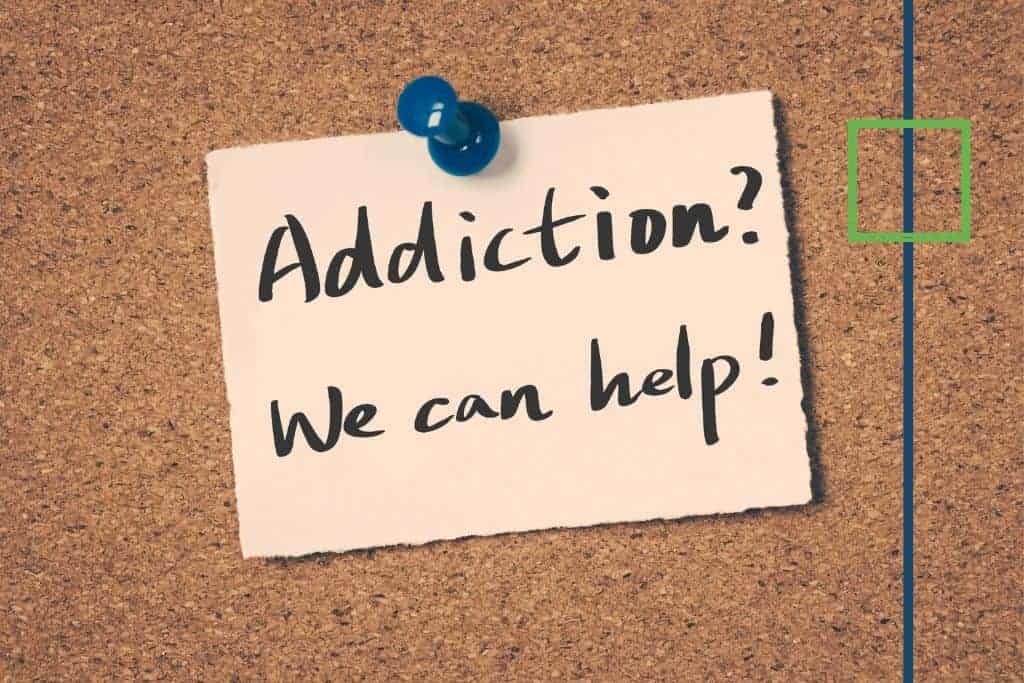

Get Your Life Back
Find Hope & Recovery. Get Safe Comfortable Detox, Addiction Rehab & Mental Health Dual Diagnosis High-Quality Care at the We Level Up Treatment Centers Network.
Hotline (877) 378-4154Suboxone Statistics
Opioid addiction rates are at an all-time high. However, because Suboxone is usually a medication-assisted treatment, statistics about its addiction aren’t as specific as other drugs.
35,064
As of 2017, only about 35,064 of the 800,000 physicians in the United States (3%) have the credentials to prescribe buprenorphine for addiction.
Source: NIH
3 Million
More than three million Americans have received Suboxone treatment.
Source: SAMHSA
1.9 Million
1.9 million had an opioid use disorder related to prescription pain relievers.
Source: NIMH
How Long Does Suboxone Stay in the System? In-Depth Look
Suboxone can be found using a variety of drug tests. Suboxone won’t cause a false positive for other opioids, despite popular belief.

Many specialized centers can treat this form of the condition and assist those affected in avoiding the numerous problems connected to long-term opiate usage. It is preferable to seek medical guidance and go off the Suboxone dosage under medical supervision rather than stopping abruptly if an addiction is detected.
Detecting morphine is a standard method used in routine urine tests to check for the presence of opioids. Numerous opioids, including heroin, convert into morphine, which is why they are found in urine screening tests. Special tests are required to find opioids like Suboxone, which do not metabolize into morphine.
Suboxone can commonly come in the form of tablets or films/strips. With that said, how long does a Suboxone strip stay in your system? Or how long do Suboxone strips remain in your system? Suboxone can be found in hair. A 1.5-inch hair sample often reveals the past 90 days of drug use. Moreover, for around five days after the last dose and about 96 hours after, doctors can detect Suboxone in plasma and saliva. Lastly, it can be seen in urine for about two weeks.
Blood tests are invasive yet have a narrow window for detecting buprenorphine. They can see drugs immediately after intake. So, how long does Suboxone stay in your system? A blood test will best function over 2 hours after the last dose. Saliva tests are increasingly frequently used since they are straightforward and noninvasive. After the previous Suboxone dose, these tests may continue to be effective for a few days or even longer.
Do you have questions about Suboxone addiction or treatment in general? Call our helpline 24/7.
Suboxone Treatment for Opioid Addiction and Withdrawal
Suboxone treatment can help with withdrawal symptoms during detox, but it shouldn’t be the only treatment option. Suboxone should be combined with counseling, support groups, and other techniques that a treatment program finds essential. Only use Suboxone in the prescribed dosage and manner. Abuse of it may result in adverse side effects or dependence.
The following buprenorphine products are FDA-approved for the treatment of OUD:
- Generic Buprenorphine/naloxone sublingual tablets.
- Buprenorphine sublingual tablets (Subutex).
- Buprenorphine/naloxone sublingual films (Suboxone).
- Buprenorphine/naloxone) sublingual tablets (Zubsolv).
- Buprenorphine/naloxone buccal film (Bunavail).
- Buprenorphine implants (Probuphine).
- Buprenorphine extended-release injection (Sublocade).
Medication-assisted treatment is a comprehensive approach that combines approved medications (currently, methadone, buprenorphine, or naltrexone) with counseling and other behavioral therapies to treat patients with OUD. Regular adherence to MAT with buprenorphine reduces opioid withdrawal symptoms and the desire to use opioids without causing the cycle of highs and lows associated with opioid misuse or abuse. At proper doses, buprenorphine also decreases the pleasurable effects of other opioids, making continued opioid abuse less attractive. According to the Substance Abuse and Mental Health Services Administration, patients receiving MAT for their OUD cut their risk of death from all causes in half.
The combination of Naloxone and Buprenorphine is designed to reduce drug cravings and prevent withdrawal symptoms associated with opioid addiction. When used with the proper guidance, Suboxone is proven effective in treating opioid misuse. Being a Schedule three substance, Suboxone can cause drug dependence when used long-term. Physical dependence can cause Suboxone withdrawal symptoms if patients go cold turkey or abruptly stop using the medication.
To prevent these mental and physical withdrawal symptoms, the suboxone treatment dosage should gradually decrease should the client wish to be off the medication. If a patient thinks they might have developed an addiction to Suboxone, they must contact a medical professional or connect to a detoxing center. Suboxone treatment can be addictive and should always be administered by specially trained medical personnel.
First-class Facilities & Amenities
World-class High-Quality Addiction & Mental Health Rehabilitation Treatment
Rehab Centers TourRenowned Addiction Centers. Serene Private Facilities. Inpatient rehab programs vary.
Addiction Helpline (877) 378-4154Proven recovery success experience, backed by a Team w/ History of:
15+
Years of Unified Experience
100s
5-Star Reviews Across Our Centers
10K
Recovery Success Stories Across Our Network
- Low Patient to Therapist Ratio
- Onsite Medical Detox Center
- Comprehensive Dual-Diagnosis Treatment
- Complimentary Family & Alumni Programs
- Coaching, Recovery & Personal Development Events
Suboxone Abuse and Addiction
While Suboxone is potentially addictive, the risk of becoming addicted to this prescription drug is less than the risk of becoming addicted to other Opioids. Since it is not as powerful a sedative as other drugs, it is less likely to cause individuals to experience cravings. Buprenorphine, the opioid ingredient of Suboxone, may provoke moderate withdrawal symptoms, specifically muscle pains, headaches, and nausea.
An individual could misuse Suboxone to relieve opioid withdrawal symptoms without a prescription or undergoing treatment for opioid abuse. In such cases, an individual might take Suboxone whenever they suffer from withdrawal symptoms, fail to abide by medical boundaries, and suffer an overdose.
Drug traffickers have been selling illicit Suboxone to individuals throughout the United States. Most individuals who buy this drug illegally are not trying to experience an opioid high. Instead, they are trying to get relief from the uncomfortable symptoms of opioid withdrawal.
When a person fails to start treatment for opioid abuse and addiction and consumes Suboxone regularly to live without withdrawal symptoms, they become dependent on the medication and never overcome the disease. While it’s easier to use Suboxone, recovery is the proper long-term solution for withdrawal and addiction.
Suboxone is abused when the pills are crushed and snorted, or the film strips are dissolved and injected. When someone injects Suboxone, they risk sharing dirty syringes and acquiring HIV or another blood-borne infection. Injecting Suboxone also causes a much more intense high than snorting the pills.
Opioid Detox
Medical detox is often considered the first stage of Suboxone and other opioid use disorder treatment. It will help you navigate the complicated drug detox withdrawal but doesn’t address patterns of thought and behavior contributing to drug use. Various treatment approaches and settings can help provide the ongoing support necessary to maintain long-term sobriety after you complete the drug detox.
Cravings are very common during drug detox and can be challenging to overcome. This often leads to relapse. Constant medical care provided during inpatient treatment helps prevent relapse. Clinicians can give medication and medical expertise to lessen cravings and withdrawal symptoms.
Inpatient Opioid Addiction Rehab
There isn’t one treatment approach or style that will suit everyone. Treatment should speak to the needs of the individual. Inpatient rehab and addiction treatment aren’t just about drug use. The goal is to help the patient stop using drugs and other substances, but drug rehab should also focus on the whole person’s needs.
Addiction is a complex but treatable disease that affects brain function and behavior. When someone or their family is considering different treatment facilities, they should account for the complexity of addiction and the needs of the individual. The objective of attending an inpatient rehab center for addiction treatment is to stop using the drug and re-learn how to live a productive life without it.
Following a full medical detox, most people benefit from inpatient rehab. Inpatient drug rehab can last anywhere from a few weeks to several months. Patients stay overnight in the rehab facility and participate in intensive treatment programs and therapy. Once someone completes rehab, their addiction treatment team will create an aftercare plan, which may include continuing therapy and participation in a 12-step program like Narcotics Anonymous.
Psychotherapy for Suboxone Withdrawal Treatment
The following therapies are often used with other treatment approaches and may be tailored to each individual’s specific needs and preferences in addiction recovery. Working with a qualified therapist or addiction counselor is essential to determine the most suitable psychotherapy for your situation.
- Cognitive-Behavioral Therapy (CBT): CBT is one of the most widely used therapies for addiction. It helps individuals identify and change negative thought patterns and behaviors associated with substance abuse. CBT also teaches coping skills to manage cravings, triggers, and stress, promoting long-term recovery.
- Motivational Interviewing (MI): MI is a client-centered therapy that aims to enhance an individual’s motivation to change and overcome addiction. Therapists use empathetic and non-confrontational techniques to help clients explore their reasons for change and set achievable goals.
- Contingency Management (CM): CM is a behavior-based therapy offering tangible rewards or incentives for meeting treatment goals, such as drug-free urine tests or counseling sessions. It provides immediate reinforcement for positive behaviors and can effectively promote abstinence.
Many rehab programs will also have early morning classes or programs. Group sessions occur during inpatient rehab, as do individual therapy sessions. Family therapy may be part of inpatient rehab when it’s feasible. Alternative forms of therapy may be introduced during inpatient rehab, like a holistic therapy program, yoga for addiction recovery, or an addiction treatment massage therapy.
Overcoming Suboxone Withdrawal. Find the Support You Need.
Withdrawal from Suboxone abuse is often a challenging process to go through alone. Many people experience relapses during withdrawal in an attempt to alleviate symptoms and satisfy cravings. However, you can manage withdrawal symptoms and successfully recover with detox and rehab therapy and a robust support system at the We Level Up NJ treatment center. If you require assistance with your rehab journey, contact a We Level Up New Jersey treatment professional now. Your call is free and confidential.
Get a free rehab insurance check without any obligation.
World-class, Accredited, 5-Star Reviewed, Effective Addiction & Mental Health Programs. Complete Behavioral Health Inpatient Rehab, Detox plus Co-occuring Disorders Therapy.
CALL (877) 378-4154End the Addiction Pain. End the Emotional Rollercoaster. Get Your Life Back. Start Drug, Alcohol & Dual Diagnosis Mental Health Treatment Now. Get Free No-obligation Guidance by Substance Abuse Specialists Who Understand Addiction & Mental Health Recovery & Know How to Help.
Top 10 Most Common FAQs for How Long Does Suboxone Stay in Urine?
-
How long does Suboxone strips stay in your system?
Suboxone (buprenorphine/naloxone) can typically be detected in a person’s urine for 2-3 days after the last dose.
-
How long is buprenorphine detectable in urine tests?
Buprenorphine, the primary active ingredient in Suboxone, can be detected in urine tests for approximately 2-4 days after the last use.
-
How long does Suboxone strip stay in urine?
Typically, buprenorphine can be detected in urine for about 2-4 days after the last use, but this timeframe may vary based on individual factors such as metabolism and dosage.
-
How long do Suboxone stay in your urine drug tests?
Suboxone, which contains buprenorphine and naloxone, can generally be detected in urine drug tests for approximately 2-4 days after the last dose. The exact detection window may vary from person to person due to factors like metabolism and the sensitivity of the testing method used.
-
What is the half life of Suboxone 8mg?
The half life Suboxone can vary depending on the individual and their metabolism. Still, the average half-life of the buprenorphine component in an 8mg Suboxone tablet is approximately 24 to 60 hours. This means it takes about 1 to 2.5 days for half of the buprenorphine to be eliminated from the body.
-
How long does Suboxone stay in your urine calculator?
There isn’t a specific “calculator” to determine how long Suboxone stays in your urine, as it depends on factors like metabolism, dosage, and individual differences. Generally, Suboxone can be detected in urine for approximately 2-4 days after the last use. Still, it’s best to consult with a healthcare professional or use a drug testing laboratory’s guidance for a more precise estimate.
-
How long does it take Suboxone to dissolve?
Suboxone tablets or films are designed to dissolve relatively quickly in the mouth. Typically, it takes about 5-10 minutes for a Suboxone tablet or film to dissolve completely when placed under the tongue or against the inside of the cheek.
-
How long for Suboxone to clear system?
The time it takes for Suboxone to completely clear from the system can vary depending on factors like metabolism, dosage, and frequency of use. Generally, it may take approximately 5 to 10 days for Suboxone to be eliminated from the body, but it could be longer for some individuals. It’s essential to consult with a healthcare professional for personalized guidance on Suboxone use and its clearance from your system.
-
How long does a Suboxone strip last?
A Suboxone strip typically relieves opioid withdrawal symptoms and cravings for about 24 to 36 hours when used as prescribed. However, the duration of its effectiveness may vary among individuals based on their unique physiology and the specific dosage prescribed by their healthcare provider.
-
How long does Suboxone work?
Suboxone is designed to work over a 24 to 36-hour period when used as prescribed. It helps individuals with opioid dependence by reducing withdrawal symptoms and cravings during this time frame, allowing for stabilization and a more gradual tapering off of opioids. However, the effectiveness and duration can vary among individuals based on factors such as their metabolism and the specific dosage prescribed by their healthcare provider.
How Long Do Opiates Stay in Your System? How Long Do Opiates Stay in Urine, Blood, & Body? Informative Video.
Opiates can stay in your system for varying lengths depending on several factors, including the specific opioid drug used, the frequency and duration of use, and individual differences in metabolism. Generally, opiates can be detected in urine for 1 to 3 days, in saliva for up to 4 days, in blood for up to 24 hours, and in hair follicles for up to 90 days after last use.
Suboxone is a medication often used in the treatment of opioid addiction. It contains two active ingredients, buprenorphine, and naloxone, which work together to reduce withdrawal symptoms and cravings while blocking the effects of other opioids. Suboxone is typically prescribed as part of a comprehensive addiction treatment program, including counseling and behavioral therapy, to help individuals recover from opioid dependence and achieve long-term sobriety. Its use is considered an evidence-based approach to opioid addiction treatment.
Experience Transformative Recovery at the We Level Up Treatment Center.
See our authentic success stories. Get inspired. Get the help you deserve.



Start a New Life
Begin with a free call to an addiction & behavioral health treatment advisor. Learn more about our dual-diagnosis programs. The We Level Up treatment center network delivers various recovery programs at each treatment facility. Call to learn more.
- Personalized Care
- Caring Accountable Staff
- World-class Amenities
- Licensed & Accredited
- Renowned w/ 5-Star Reviews
We’ll Call You
Search We Level Up NJ How Long Does Suboxone Stay in Your System? Detox Topics & Resources
Sources
[1] What is Buprenorphine? – Substance Abuse and Mental Health Services Administration (SAMHSA) How Long Does Suboxone Stay in Your System? & How Long Does Suboxone Last? Related topics.
[2] Buprenorphine Treatment Practitioner Locator – Substance Abuse and Mental Health Services Administration (SAMHSA) How Long Does Suboxone Stay in Your System? & How Long Does Suboxone Last? Related topics.
[3] SUBOXONE® sublingual film – Accessdata.fda.gov US Food & Drug Administration How Long Does Suboxone Stay in Your System? & How Long Does Suboxone Last? Related topics.
[4] SUBOXONE (buprenorphine and naloxone) sublingual tablets – Food & Drug Administration (FDA) How Long Does Suboxone Stay in Your System? & How Long Does Suboxone Last? Related topics.
[6] Kumar R, Viswanath O, Saadabadi A. Buprenorphine. [Updated 2023 Apr 29]. In: StatPearls [Internet]. Treasure Island (FL): StatPearls Publishing; 2023 Jan-. Available from: https://www.ncbi.nlm.nih.gov/books/NBK459126/ How Long Does Suboxone Stay in Your System? & How Long Does Suboxone Last? Related topics.
[7] Velander JR. Suboxone: Rationale, Science, Misconceptions. Ochsner J. 2018 Spring;18(1):23-29. PMID: 29559865; PMCID: PMC5855417. How Long Does Suboxone Stay in Your System? & How Long Does Suboxone Last? Related topics.
[8] Practice Guidelines for the Administration of Buprenorphine for Treating Opioid Use Disorder – Federal Register (.gov) How Long Does Suboxone Stay in Your System? & How Long Does Suboxone Last? Related topics.
[9] Blum K, Oscar-Berman M, Femino J, Waite RL, Benya L, Giordano J, Borsten J, Downs WB, Braverman ER, Loehmann R, Dushaj K, Han D, Simpatico T, Hauser M, Barh D, McLaughlin T. Withdrawal from Buprenorphine/Naloxone and Maintenance with a Natural Dopaminergic Agonist: A Cautionary Note. J Addict Res Ther. 2013 Apr 23;4(2):10.4172/2155-6105.1000146. Doi 10.4172/2155-6105.1000146. PMID: 24273683; PMCID: PMC3835595. How Long Does Suboxone Stay in Your System? & How Long Does Suboxone Last? Related topics.
[10] Deyo-Svendsen M, Cabrera Svendsen M, Walker J, Hodges A, Oldfather R, Mansukhani MP. Medication-Assisted Treatment for Opioid Use Disorder in a Rural Family Medicine Practice. J Prim Care Community Health. 2020 Jan-Dec;11:2150132720931720. Doi 10.1177/2150132720931720. PMID: 32507023; PMCID: PMC7278292. How Long Does Suboxone Stay in Your System? & How Long Does Suboxone Last? Related topics.

